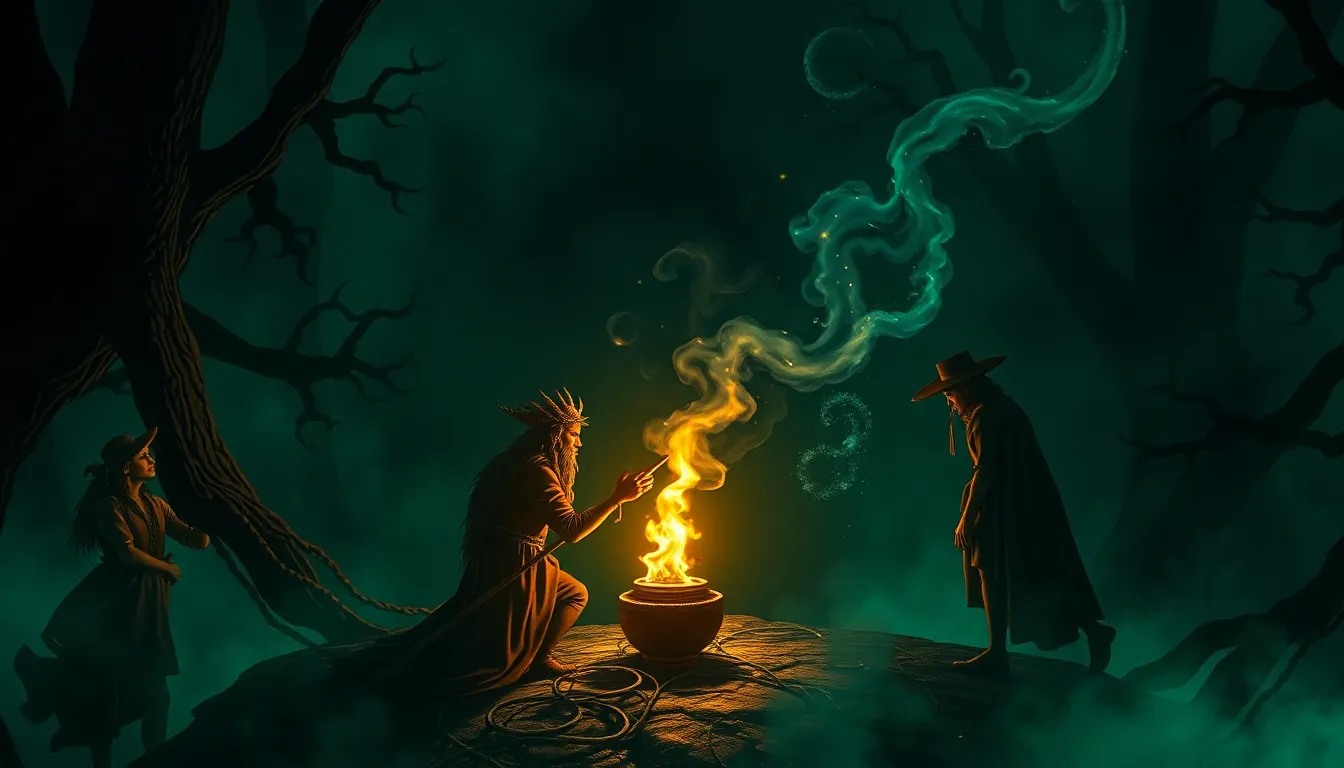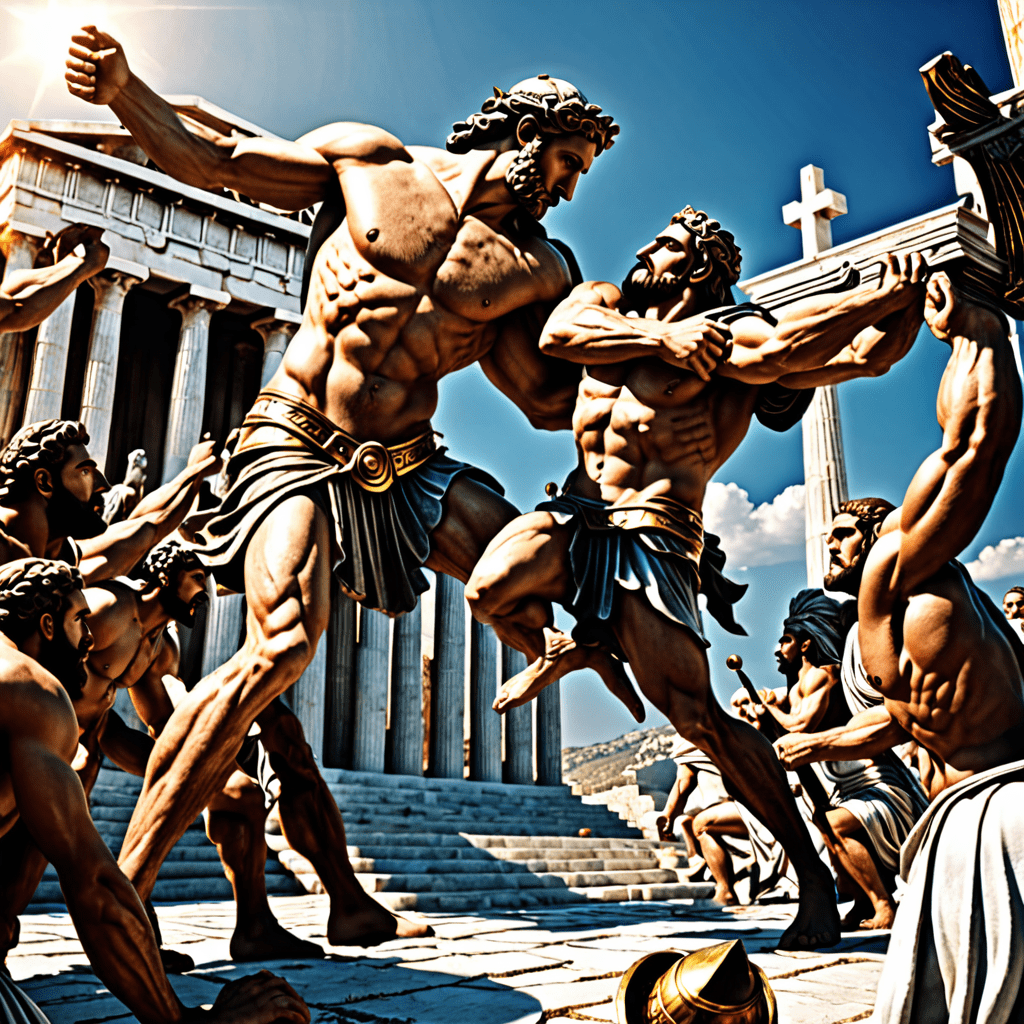The Craft of the Trickster: Tales of Deception and Wit
I. Introduction
The trickster archetype is a fascinating and complex character found in many cultures around the world. This archetype embodies a blend of deception and wit, often serving as a catalyst for change and insight. Tricksters are known for their cunning, humor, and ability to outsmart others, frequently challenging societal norms and expectations.
Trickster tales are significant in various cultures as they often convey important lessons about human nature, morality, and the complexities of life. These stories entertain while simultaneously offering profound wisdom through the lens of humor and deception.
Throughout this article, we will explore the themes of deception, wit, and wisdom as they manifest in the rich tapestry of trickster narratives.
II. Historical Context of Trickster Figures
Trickster characters have deep roots in folklore and mythology, with origins that can be traced back to ancient oral traditions. These figures serve a vital role in storytelling, reflecting societal values and the human experience.
A. Origins of Trickster Characters in Folklore
The trickster archetype appears in many cultures, often originating from tales that were passed down through generations. These stories frequently feature a clever protagonist who uses their intelligence to navigate challenges and outwit adversaries.
B. Common Traits Across Different Cultures
- Intelligence and cunning
- A penchant for deception and trickery
- A humorous and playful demeanor
- Nonconformity and rebellion against societal norms
C. Evolution of Trickster Tales Over Time
As societies evolved, so too did the trickster tales. With the advent of written language, these stories became immortalized in literature, adapting to reflect contemporary issues and values while retaining their core attributes.
III. Notable Trickster Figures in Mythology
Various cultures boast notable trickster figures, each embodying unique characteristics and stories that illustrate the diverse nature of this archetype.
A. Anansi the Spider (African Folklore)
Anansi, a spider from West African folklore, is known for his cleverness and ability to outsmart larger and more powerful beings. His stories often convey moral lessons about wisdom and the importance of storytelling.
B. Loki (Norse Mythology)
Loki is a complex figure in Norse mythology, known for his shape-shifting abilities and cunning nature. His actions often lead to chaos and conflict among the gods, highlighting the duality of tricksters as both creators and destroyers.
C. Coyote (Native American Traditions)
The Coyote is a central figure in many Native American traditions, representing the trickster’s role in creation stories and moral teachings. Coyote’s antics often reflect human follies, teaching valuable lessons about humility and wisdom.
D. Hermes (Greek Mythology)
Hermes, the messenger god in Greek mythology, is known for his trickery and cleverness. He embodies the trickster archetype by using his wits to navigate between the mortal and divine realms, often playing pranks on both gods and humans.
IV. The Role of Deception in Trickster Tales
Deception is a fundamental aspect of trickster stories, serving various purposes that contribute to the narrative’s depth and meaning.
A. Types of Deception: Pranks, Lies, and Manipulations
- Pranks that highlight the absurdity of situations
- Lies that reveal deeper truths about human nature
- Manipulations that challenge authority and societal norms
B. The Moral Implications of Trickery
While trickery often leads to humorous outcomes, it also carries moral weight. Tricksters can reveal the flaws and hypocrisy in society, prompting reflection and change.
C. How Deception Leads to Revelations and Growth
Through deception, tricksters often facilitate revelations that lead to personal growth and transformation for both themselves and those they encounter. Their actions challenge individuals to confront their own beliefs and behaviors.
V. Wit as a Tool of the Trickster
Wit is a powerful tool in the trickster’s arsenal, serving to entertain, provoke thought, and critique societal norms.
A. The Importance of Humor in Trickster Narratives
Humor plays a crucial role in trickster tales, making difficult truths more palatable and allowing audiences to engage with complex themes in an accessible way.
B. Clever Dialogues and Wordplay
Trickster stories often feature sharp dialogues and clever wordplay that highlight the character’s intelligence and quick thinking. These exchanges not only entertain but also serve as a means of social commentary.
C. Wit as a Means of Social Commentary
Through humor and wit, tricksters can critique societal norms and expose injustices, encouraging audiences to question the status quo and consider alternative perspectives.
VI. Tricksters in Contemporary Literature and Media
The trickster archetype continues to thrive in contemporary literature and media, adapting to modern themes and issues.
A. Modern Adaptations of Classic Tricksters
Many modern stories reinterpret classic trickster figures, placing them in new contexts that resonate with contemporary audiences. For example, adaptations of Anansi and Coyote often explore themes of identity and cultural heritage.
B. Trickster Archetypes in Literature
Literature such as “The Hitchhiker’s Guide to the Galaxy” features trickster-like characters that challenge conventional wisdom and navigate a chaotic universe with humor and cleverness.
C. The Influence of Trickster Characters in Film and Television
- Characters like Jack Sparrow in “Pirates of the Caribbean”
- Deadpool in the Marvel universe
- Various characters in animated series that embody trickster traits
VII. Psychological Perspectives on the Trickster
From a psychological standpoint, the trickster archetype represents rebellion and nonconformity, reflecting deeper aspects of human behavior.
A. The Trickster as a Symbol of Rebellion and Nonconformity
Tricksters challenge established norms and provoke change, making them symbols of rebellion against authority and societal constraints.
B. Psychological Analysis of Trickster Behavior
The behavior of tricksters can be analyzed through various psychological lenses, revealing insights into identity, morality, and human relationships.
C. The Trickster’s Role in Personal Transformation
Engaging with trickster narratives can inspire personal transformation, encouraging individuals to embrace their own complexities and contradictions.
VIII. The Cultural Significance of Trickster Tales
Trickster tales hold significant cultural importance, serving as vehicles for societal reflection and identity formation.
A. Tricksters as Agents of Change in Society
Tricksters often act as catalysts for change, prompting individuals and societies to confront their shortcomings and consider new possibilities.
B. Lessons and Morals Embedded in Trickster Narratives
- Understanding the consequences of deception
- Embracing humor and wit in adversity
- Recognizing the value of intelligence and cunning
C. The Trickster’s Influence on Cultural Identity
Trickster tales contribute to cultural identity, reflecting the values, struggles, and aspirations of the communities from which they originate.
IX. Crafting Your Own Trickster Tales
If you are inspired to create your own trickster tales, consider the following elements and tips for successful storytelling.
A. Elements of a Successful Trickster Story
- A relatable trickster character
- A conflict that highlights the trickster’s cleverness
- A resolution that imparts a moral lesson
B. Tips for Writing Engaging Trickster Characters
To create compelling trickster characters, focus on their intelligence, humor, and the complexities that make them relatable. Consider their motivations and the societal norms they challenge.
C. Exercises for Developing Wit and Deception in Storytelling
Practice writing dialogues filled with clever wordplay, create scenarios where your trickster character must navigate tricky situations, and



